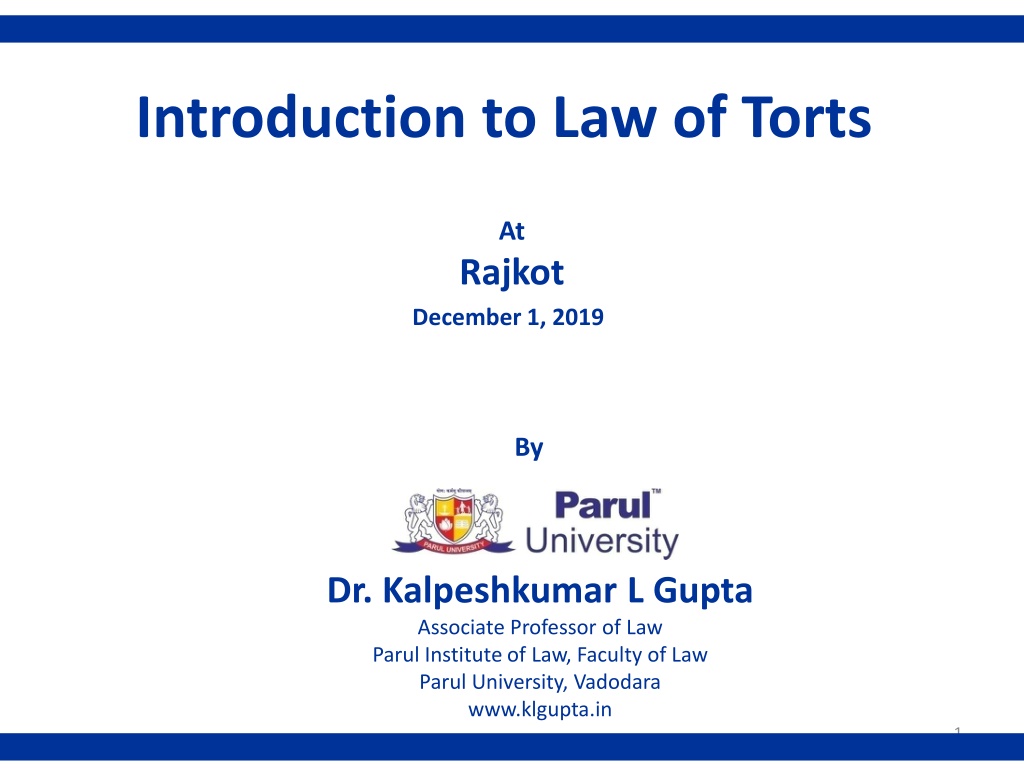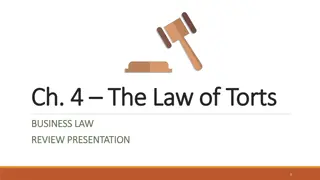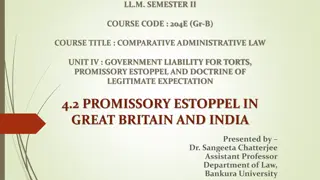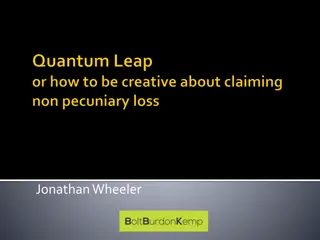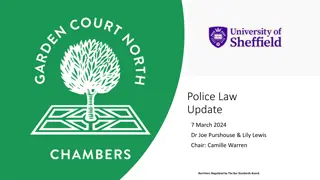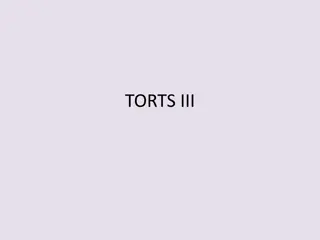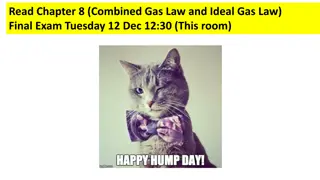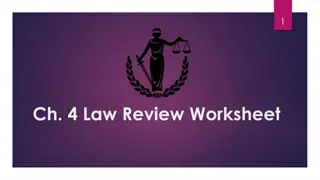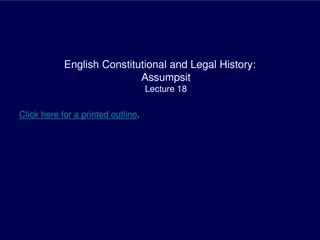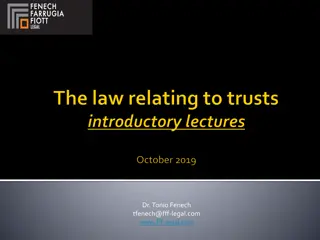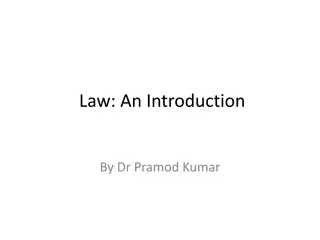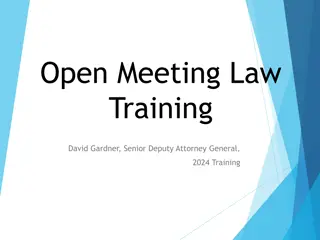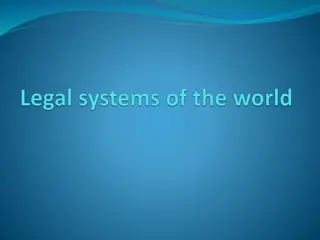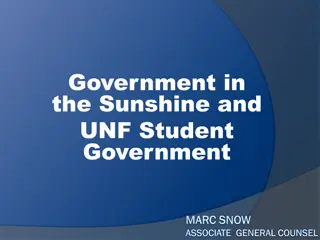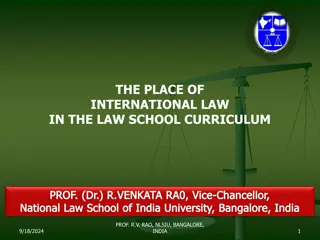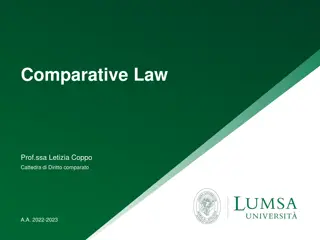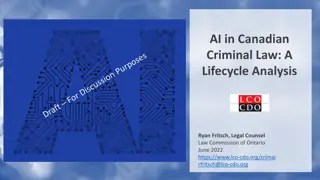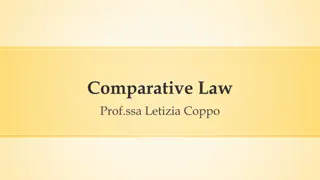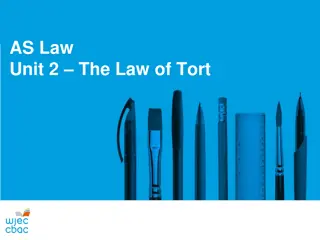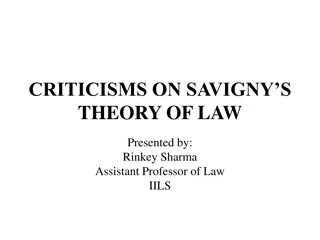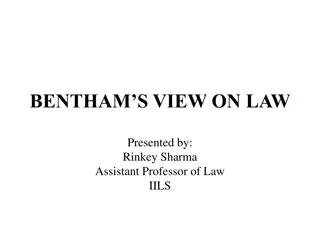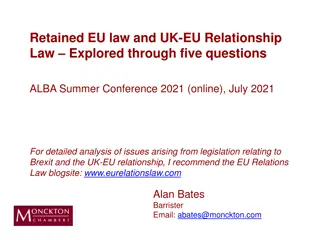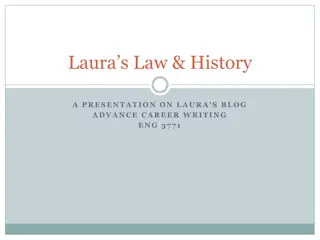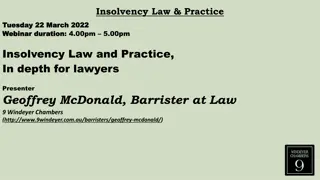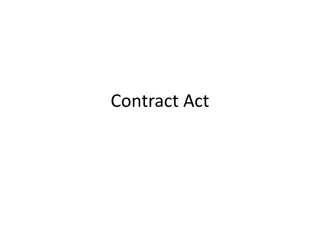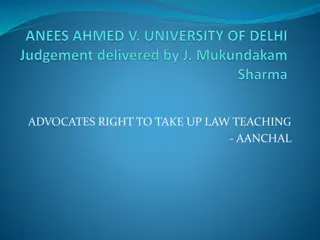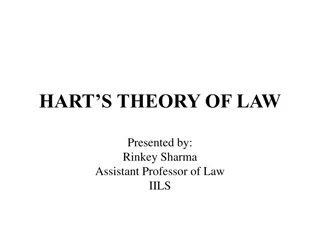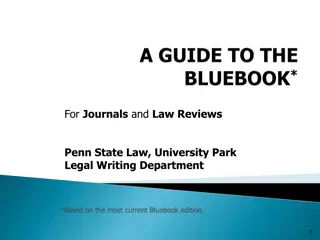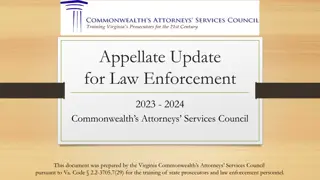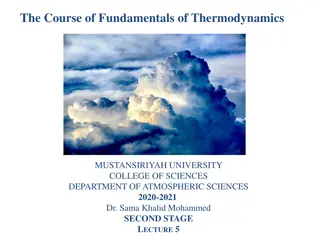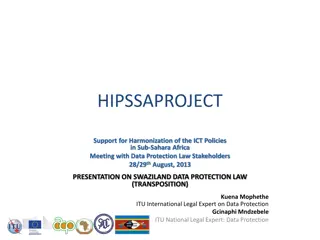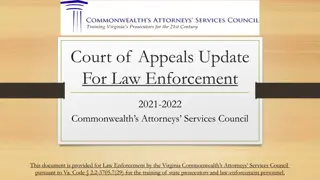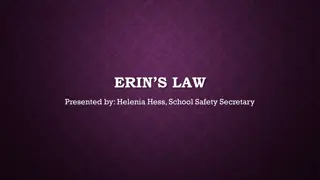Understanding Law of Torts: An Overview
Explore the fundamentals of the Law of Torts through insights on the concept of law, the definition of torts, origin of the term "tort," distinctions between tort and crime, and the elements that make up a tort. Learn about civil remedies, common law actions, and the intersection of torts with contracts.
Download Presentation

Please find below an Image/Link to download the presentation.
The content on the website is provided AS IS for your information and personal use only. It may not be sold, licensed, or shared on other websites without obtaining consent from the author. Download presentation by click this link. If you encounter any issues during the download, it is possible that the publisher has removed the file from their server.
E N D
Presentation Transcript
Introduction to Law of Torts At Rajkot December 1, 2019 By Dr. Kalpeshkumar L Gupta Associate Professor of Law Parul Institute of Law, Faculty of Law Parul University, Vadodara www.klgupta.in 1
What do you mean by Law? 2 klgupta.in
3 klgupta.in
Ubi jus ibi remedium where there is a right, there is a remedy 4 klgupta.in
What is Tort Tort is - a wrong - Independent of contract - Giving rise to civil remedy - For which compensation is recoverable Tort is a civil wrong for which you get unliquidated damages. 5 klgupta.in
What is Tort According to Salmond A tort is a civil wrong for which the remedy is a common law action for unliquidated damages, and which is not exclusively the breach of a contract or the breach of trust or other merely equitable obligation. According to Winfield Tortious liability arises from the breach of duty primarily fixed by law, this duty is towards persons generally and its breach is redressable by an action for unliquidated damages. 6 klgupta.in
Origin of Word Tort source means Tortum Twist Tort 7 klgupta.in
Tort & Crime TORT CRIME 1. Civil Suit 1. Criminal Prosecution 2. Pvt. Wrong 2. Public Wrong 3. Compensation 3. Punishment 4. Plaintiff 4. Prosecution 8 klgupta.in
Tort & Contract TORT CRIME 1. Duty imposed by law 1. Duty imposed by parties 2. No needed 2. Privity of Contract 3. Unliquidated damage 3. Liquidated Damage 9 klgupta.in
Elements of Tort Every wrongful act is not a tort. To constitute a tort three things must concur 1. A wrongful act by the defendant; 2. Legal damage to the plaintiff; and 3. The wrongful act must be of such a nature as to give rise to a legal remedy in the form of an action for damages Wrongful Act An act is said to be wrongful if it invades the private rights of a person, viz a. The right of a good reputation b. The right of bodily safety and freedom; or c. The right of property 10 klgupta.in
Injuria Sine Damnum Means injury without damage e.g. Tresspassing Cases Ashby v/s. White (Vote not counted) Municipal Board, Agra v/s. Asharfilal (Voting Rights) Marzetti v/s. Williams (Wrongful Dishonour of Cheque) 11 klgupta.in
Damnum Sine Injuria Means damages without injury Cases Glocesster Grammer School(School) Chasemore v/s. Richards (Stream water) 12 klgupta.in
Classification of Torts A. Personal Wrongs B. Wrongs to property C. Wrongs to person, Estate & property generally 13 klgupta.in
Classification of Torts 1. Personal Wrongs -Wrong affecting safety and freedom of the person, assault, battery, false imprisonment. -Wrongs affecting personal relations in the family; -Wrongs affecting reputation; slander and libel -Wrongs affecting estate generally, deceit, slander of title, malicious prosecution, conspiracy 14 klgupta.in
Classification of Torts 2. Wrongs to Property -Tresspass to land, goods, disturbance of easement -Interference with right analogues to property 15 klgupta.in
Classification of Torts 3. Wrongs to Person, Estate and Property generally -Nuisance -Negligence 16 klgupta.in
Defamation -Every man has a right to have his reputation preserved inviolate. This right of reputation is acknowledged as an inherent personal right of every person. -A defamatory statement is a statement calculated to expose a person to hatred, contempt or ridicule or to injure him in his trade, business, profession, calling or office or to cause him to be shunned or avoided in society for maintaining a suit for defamation, it is necessary that the plaintiff must have suffered some injury to his reputation 17 klgupta.in
Defamation -Defamation may be committed either by way of writing (or its equivalent), or by way of speech. The term Libel is used for former kind of utterance and Slander for the latter - Libel is a written and Slander is a spoken defamation 18 klgupta.in
Remedies 1. Judicial Remedies Judicial Remedies are those which are afforded by the act of law, viz., awarding damages; granting injunction; and restitution of property 2. Extra-Judicial Remedies Extra-judicial remedies are those which are available to a party in certain cases of torts by his own acts alone viz, expulsion of a trespasser, re-entry on land, re-caption of goods, distress damage feasant, abatement of nuisance 19 klgupta.in
Remedies 1. Judicial Damages are the pecuniary compensation which the law awards to a person for the injury he has sustained by the wrongful act of another. Causation (Smith v/s. L & S W Railway, 1870) Remoteness of damages Test of foreseeability Mitigation of Damages Kinds of Damages. Loss of life (Tree fell, Municipal Corporation of Delhi v/s. Sushila Devi, AIR 1999 SC 1929) Compensation under Section 357, CrPC Injunction 20 klgupta.in
Remedies 2. Extra Judicial -Self Defence -Expulsion & Re-entry -Abatement of nuisance -Distress damage feasant -Re-caption 21 klgupta.in
Rylands vs. Fletcher (1868, House of Lord, UK) 22 klgupta.in
23 https://courses.lumenlearning.com/masterybusinesslaw/chapter/introduction-to-tort-law/ klgupta.in
Dr. Kalpeshkumar L Gupta www.klgupta.in 24
